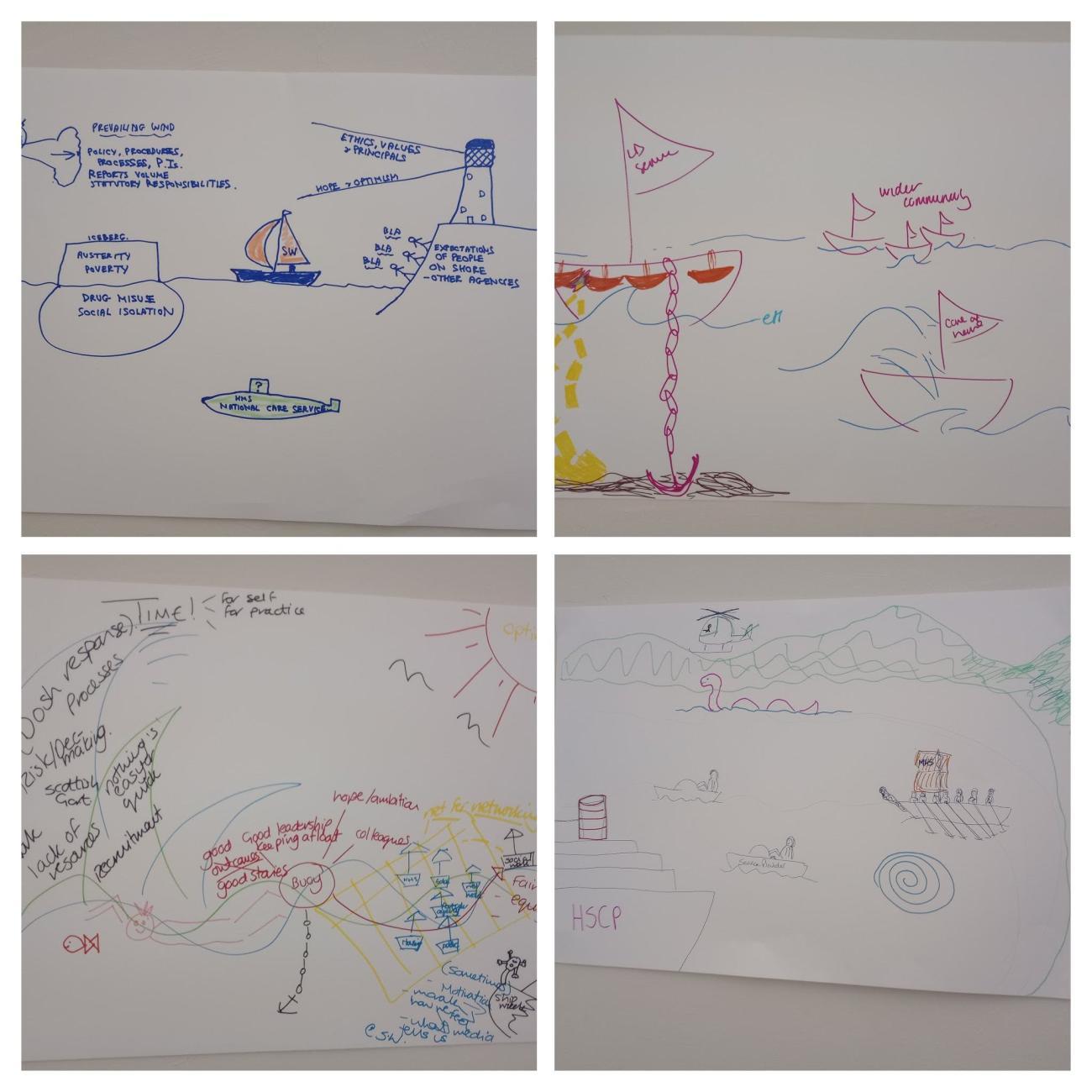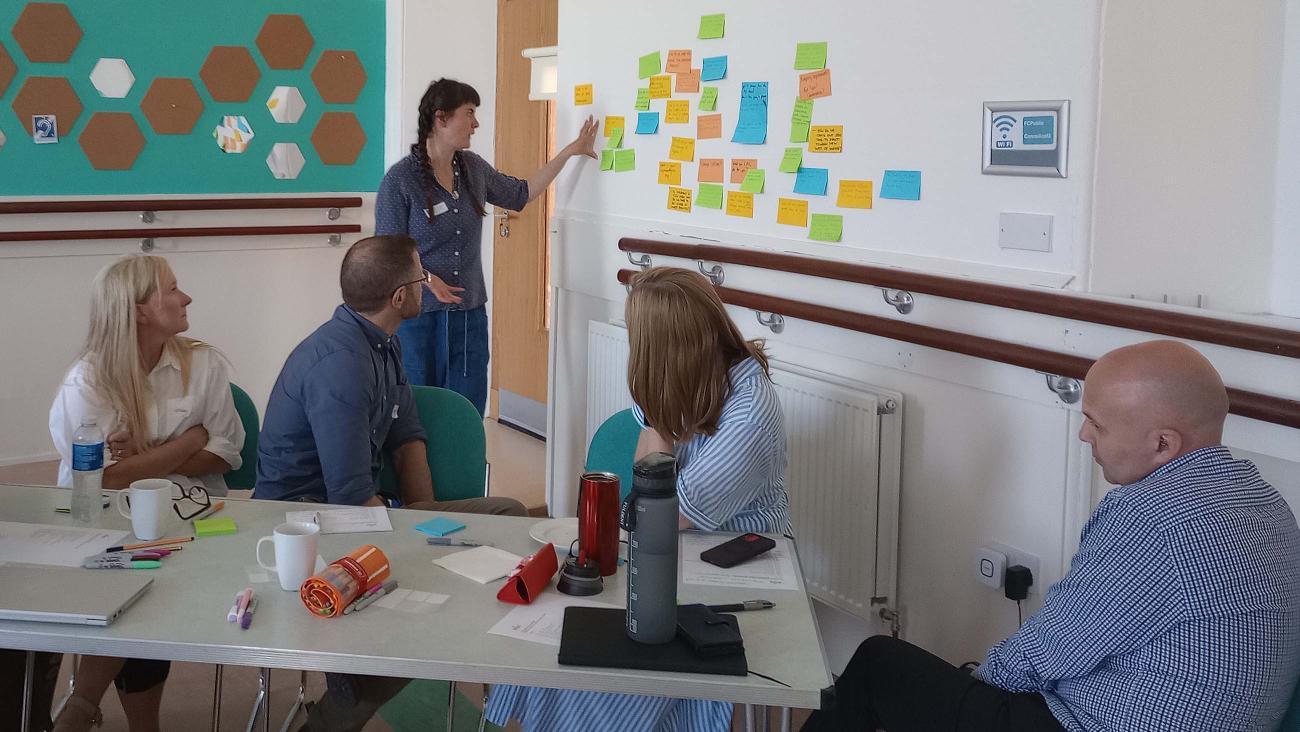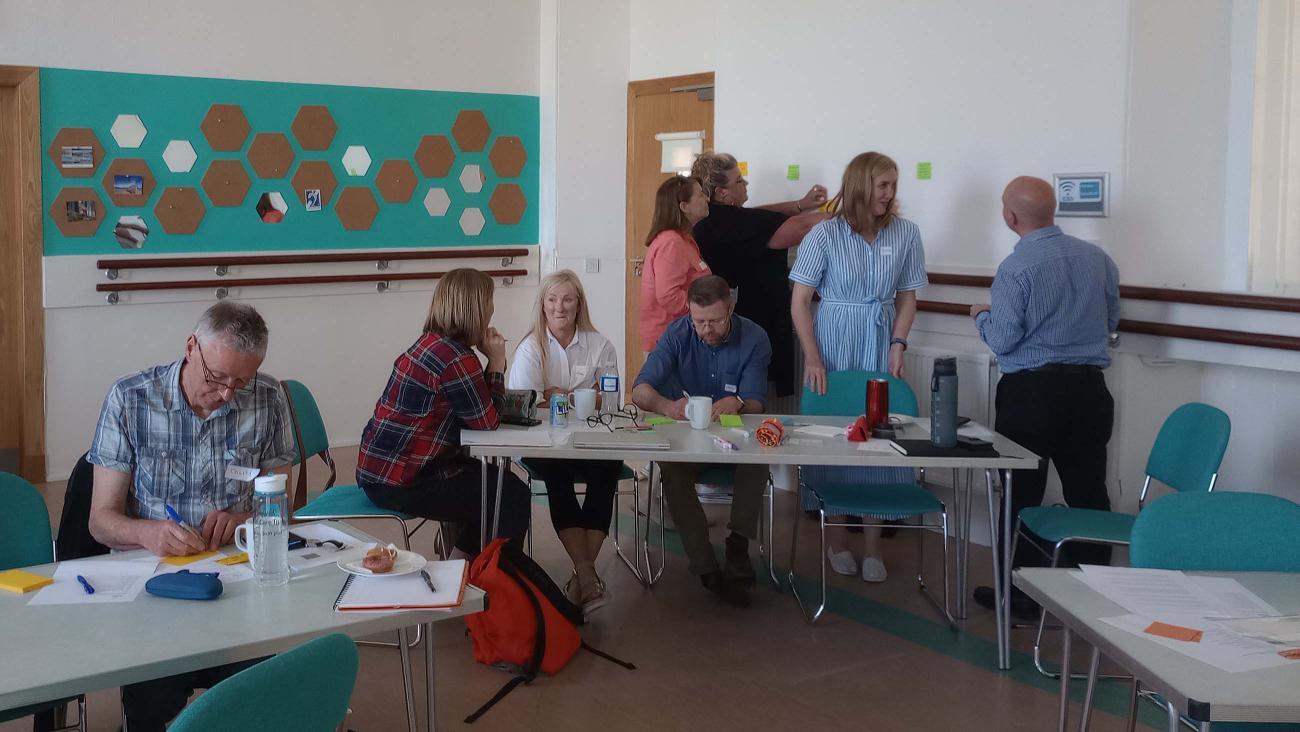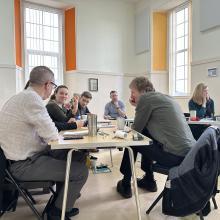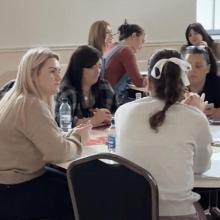Introduction
Iriss and North Ayrshire HSCP colleagues met in Irvine on the 29th May for a kick-off workshop. Part of Iriss’s Space to Practice theme, the workshop was designed to provide a blend of presentation on key topics (innovation and ideas, Community Social Work, Local Area Coordination, ways to make change) and space for group reflection, discussion and planning.
What’s in our context?
This discussion provided some reflection space to visualise the backdrop to current practice. Using the prompt of a seascape, the group created pictures to outline how they see their current context:
This exercise uncovered a range of perspectives about hope, optimism, ethics and values as guiding lights, buoys and anchors for practice. Challenges, risks and uncertainty were expressed as things that lurk beneath the surface, shipwrecks, waves or weather. Nessie was also used to illustrate the importance of challenging myths and questioning our thinking.
Key themes
The workshop made space for discussion on a range of topics that surfaced. Key areas included culture change, what good looks like, resources, engagement, gaps and actions.
Culture change and integration
Discussions around culture change emphasised the importance of involving parents, family members, and practitioners from health and social services in bringing about change. The need to demonstrate examples of success and connect parents to showcase what is achievable was noted. Additionally, points were made about the significance of using various social work skills to expand people's perspectives through group activities, greater recognition of potential, and raising awareness within communities, services and beyond. The group were positive about the need for a cultural shift within social work but acknowledged the challenge of this in a ‘risk averse culture’.
What does good look like?
The group discussed what good would look like and some indicators of change which included:
- People in communities actively seeking us out to support them when they need us
- Verbal and written feedback, fewer referrals
- People’s outcomes being met, and the positive feedback loop from this
- Potentially reductions in the need for support
- A mindset of relationships rather than caseload
- Happier staff - recruitment crisis could be tackled by better work wellbeing
- Sustainable communities and building natural pathways for support
- Money and resources
- Monitoring complaints
- ‘Surgeries’ or drop-in services
Resources
Resources were frequently referenced throughout the discussion. In terms of money, the point was made that we need to ‘challenge the myth of scarcity’ and focus needs to shift to how resources are allocated. Questions were raised about making a difference with the same resource. Questions about budgetary requirements, red tape and Governance were raised. The discussion also highlighted the importance of challenging current mindsets around ‘duplication’ as a negative thing and considering if a ‘complimentary range of access points to services could be more human’.
Recruitment and retention
Using resources more effectively could help make jobs in social work more attractive by reducing bureaucracy (related to the outcomes of the SDS review), having manageable caseloads, CPD and good reflective supervision. This could help address the cost of ‘perpetual recruitment’.
Time and space
Time was a key resource discussed. Questions focused on how to work in current time constraints, how to reduce time taken to do things while carving out time to work in new ways. It was recognised that practitioners needed freeing up from ‘the claims of systems’ to ‘undertake preventive work at a community level’. An ‘ingrained response’ of more staff as the answer to creating more time was also noted, relating to issues around recruitment. The need to provide space for practitioners to reflect, study, engage and feel confident to address fear and risk were noted.
Engagement & buy-in
The need for engagement to gain buy-in for a new approach was highlighted including clarity about our terms and having a range of engagement mechanisms to reach communities, practitioners & local politicians. There was a call to understand current practices for engagement and gaining staff buy-in. Being able to articulate what community social work is and the value of it, as well as evidence it, is essential. When we asked the group about their key questions for a new approach, many of them focused on the buy-in of senior management, those involved in commissioning and their ability to ‘carry an element of risk and tolerate uncertainty’ in pursuit of meaningful change. There were also questions about navigating elements of professional identity, ‘role overlap’ and ‘professional ownership’. Questions also focused on when and how to include citizens and communities.
Gaps
Towards the end of the day, we discussed any gaps and things to think about in our next steps. What emerged included:
- Understanding how existing team structures, including location, might lend themselves to more focused community practice and relationship building.
- Community profiling to better understand and identify any particular communities to focus on (geographical or virtual). How we define community was a question.
- A working together agreement – this could help with the mix of management and practitioners in the room and to support a safe space for ‘non-hierarchical discussions’.
- Broader representation / input from other colleagues including frontline practitioners, adult services, health, third sector, education, community groups and early years.
Actions
This discussion asked the group to think about some potential changes they might make as part of this project. Responses included:
- Communication and messaging - taking information to team meetings and raising awareness.
- Reducing paperwork – alleviating pressure on practitioners.
- Tool development – creating a constructive, meaningful tool that supports relationship-based practice so people accessing support don’t have to repeat their story.
- Creating a ‘northern star’ – a guide for any shifts in practice. This could be a persona (What would Nancy think of this?) or a core question (Is this of benefit?) to act as a navigation aid.
This workshop provided a good grounding for the Explore phase of our innovation approach and helps us start from where people are. The learning from this session will go into planning a larger workshop in August.
